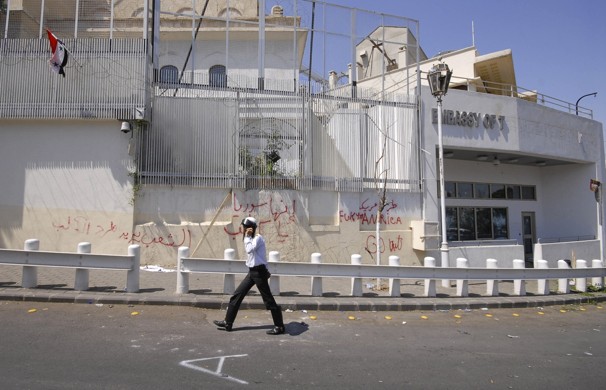President Barack Obama’s vision for modernizing the U.S. military is little more than an exercise in “back to the future.”
Consider: Back in 2001, the armed forces were nearly a decade into positing what 21st-century warfare would entail. These considerations were based on notions set forth by the individual (military) services. They also considered how the U.S. Department of Defense (DoD) could be structured to meet strategic challenges beyond 2015.
Each service posited a future according to its strategic and operational missions. In early 2001, as the newly elected Bush administration took hold, Secretary of Defense Donald Rumsfeld seemed determined to cut ground forces, eager instead to bolster the power-projection capabilities inherent in air and sea power. The Army countered that all but a handful of nations relied on ground forces for security. That being the case, high-tech weapons like the F-22 Raptor and expensive naval forces, while essential to meeting high-end threats, would not be particularly useful in addressing challenges posed by potential second-tier threats emerging in North Korea, Iran, Syria, and evident in Saddam Hussein’s Iraq. September 11, 2001 muted all such arguments.
Over the remainder of the decade, the War on Terror put excessive demands on ground forces. The Air Force and the Navy became supporting services in a war where the Army and the Marine Corps bore the “heavy lifting.” Indeed, the development and acquisition of high-tech systems like the F-22 Raptor and the F-35 Lighting II went into eclipse or steep reductions. Other Cold War “legacy” systems like the stealthy Comanche helicopter and the Crusader Gun System were cancelled, and rightly so given the nature of the threat emanating from al Qaeda, the Taliban, and associated groups.
The Obama administration, partly reacting to budgetary realities largely resulting from its profligate economic-stimulus spending and partly from ideological inclinations, is determined to reduce the DoD budget by $400 billion over the next decade. The reality is that the vision laid out by President Obama accords very much with where we were a decade ago. The Rumsfeld vision was to reduce the Army, which in January 2001 numbered about 480,000, by two or more divisions. The new restructuring would lead to a leaner and more flexible military. The bottom line was that U.S. technological superiority would provide a more efficient approach to future warfare than depending on manpower-intensive formations of soldiers. Even a decade ago, this was not a new argument.
Operating in the irradiated afterglow of Hiroshima and Nagasaki 55 years earlier, the Truman administration held that U.S. technological advantage in “air atomic” warfare capabilities obviated the need for large ground forces, which are expensive to maintain. In 1950, obsolescent Russian tanks and massive formations of North Korean and Chinese troops brought reality back into focus along the 38th parallel.
Lessons from Korea went unheeded. In 1954, the new Republican administration of Dwight Eisenhower opted to depend on “massive retaliation” based on U.S. superiority in nuclear weapons. The Army was again reduced in strength. As the 1950s merged into the 1960s, again, the U.S. advantage in high-tech weaponry, while deterring Soviet aggression, didn’t prevent the emergence of challenges from the lower end of the spectrum, this time in Southeast Asia. The pendulum swung back with the Kennedy administration’s focus on “flexible response.” The Army was back and off to Vietnam.
The Obama administration’s vision for the future closely mirrors that emerging from the early days of its immediate predecessor. Nevertheless, as Secretary of Defense Leon Panetta has readily admitted, there are risks involved.
What DoD needs is radical restructuring, which probably would result in added efficiencies. However, when dealing with national security, the bottom line is effectiveness and not efficiency. In those terms, the administration’s vision for the future is nothing new.
An American military based on European-style economic and quasi-socialist political models will result in the same rapid decline in world leadership suffered by Britain, France, and even Russia during the last century. The result of the United States’ retreat from the world stage will foster the rise of a global hegemon willing to fill that vacuum, be it China or an unholy alliance of rogue states like Iran, Syria, Venezuela, and North Korea. Those are the threats, and they are real.

COMMENTS
Please let us know if you're having issues with commenting.